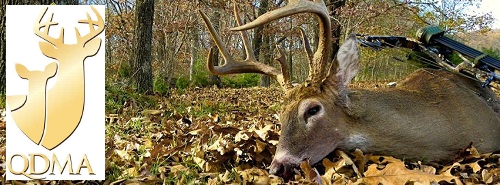 The doe kicked and ran out of the food plot like a hard-hit deer, hunched with its tail tucked, and I heard loud crashing sounds not far into the thicket. Confident I had venison on the ground within easy reach, I watched the remaining light fade from the woods and waited on my hunting partner to join me. Yet, once we started tracking, neither my hunting partner nor I could find any blood with our flashlight beams, and acres of barely penetrable briars in the surrounding cutover did not help. After a restless night, I returned at daylight and was relieved to find the doe within minutes, piled up just 10 yards off a trail I had crawled along the night before. Nearly 14 hours had passed since I shot, and though it was January 2, the overnight low in South Georgia was only 46 degrees. I wondered, was it safe for me to eat this deer?
The doe kicked and ran out of the food plot like a hard-hit deer, hunched with its tail tucked, and I heard loud crashing sounds not far into the thicket. Confident I had venison on the ground within easy reach, I watched the remaining light fade from the woods and waited on my hunting partner to join me. Yet, once we started tracking, neither my hunting partner nor I could find any blood with our flashlight beams, and acres of barely penetrable briars in the surrounding cutover did not help. After a restless night, I returned at daylight and was relieved to find the doe within minutes, piled up just 10 yards off a trail I had crawled along the night before. Nearly 14 hours had passed since I shot, and though it was January 2, the overnight low in South Georgia was only 46 degrees. I wondered, was it safe for me to eat this deer?
Coincidentally, only a few weeks before this, I had spoken to Dr. Cathy Cutter, professor of food science and the Food Safety Extension Specialist at Penn State University, who is also a hunter and author of numerous guides on game and fish preparation. I asked her the question many hunters have wondered about, especially in southern latitudes: What’s the deadline to locate a deer in warm weather before it’s no longer safe to eat?
Her answer was, as you might guess, “It depends.”
“What type of shot are we talking about?” she asked. “If you rupture the digestive tract, you release a lot of bacteria. Also, what’s the temperature? And how long did it take you to find the deer? All these things come into play.”
The enemies, Dr. Cutter told me, are bacteria of many types, including E. coli and salmonella, billions of which already reside in the digestive tracts of deer, as well as staphylococcus bacteria that are present on the hide and hair and can be carried inside the deer by arrows or bullets. According to Dr. Cutter, when temperatures are above 40 degrees F, bacteria grow rapidly once the deer is dead, and the higher the temperature the faster the growth.
“If it’s cold weather, and it’s a clean shot, you might be able to do fine,” she said. “You really aren’t going to know until you find the deer, estimate the time of death, and see the type of shot.”
Recalling that conversation, I studied my doe. The deer was hit through both lungs and had died quickly – too quickly to leave a good blood trail but not before finding thick cover. So, it seemed like I had a “clean shot.” But as I studied the exit wound, I smelled a bad odor similar to gut contents. Not good. Though the air temperature had dipped to 46 degrees overnight, no doubt the internal temperature of the muscle and organs never got anywhere near that low. The doe had gone down in a tangle of small saplings that held her upright with legs tucked – one of the reasons she had been difficult to spot the night before, since there was no white belly showing to reflect lights. This position probably also helped retain body heat. I knew I needed to reduce the temperature of the meat as quickly as possible, so I dragged the deer out, loaded it, and hurried to the skinning pole. Read more – https://www.qdma.com/articles/how-long-is-venison-safe-in-warm-weather

